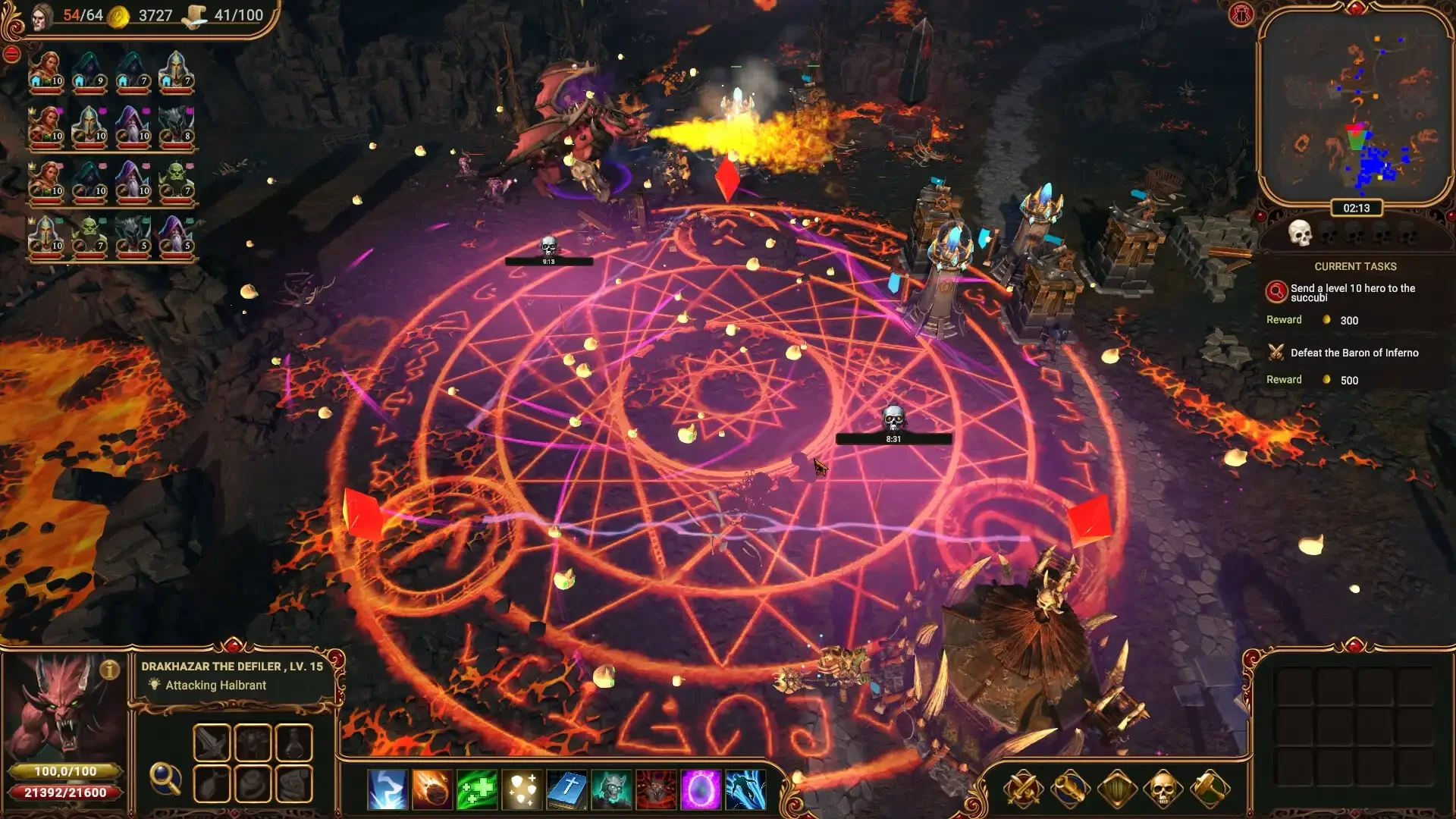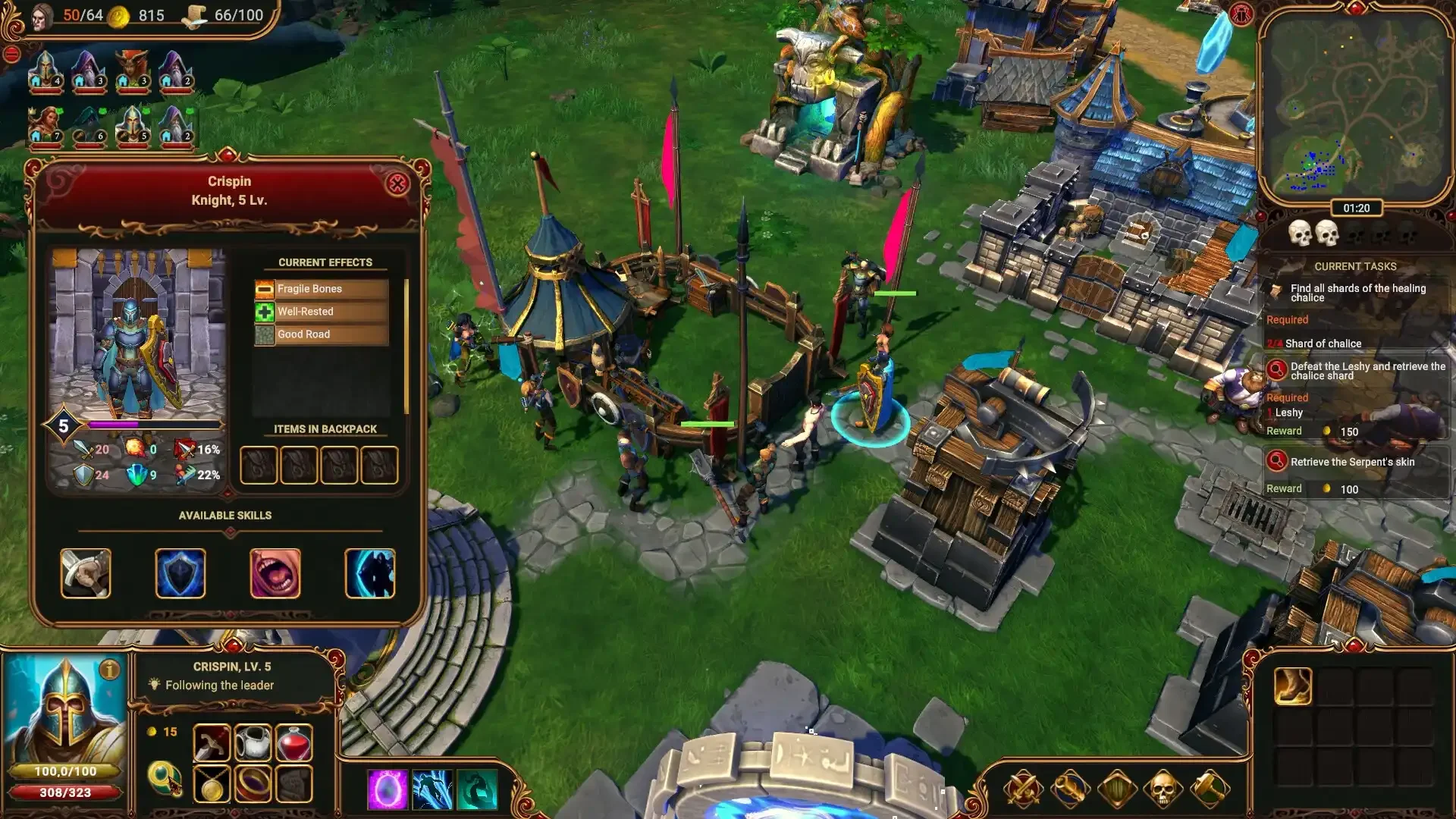Lessaria: Fantasy Kingdom Sim REVIEW - Majesty's Ghost Just Walked In, Grabbed a Beer, and Put Its Feet Up
Let’s be honest, spiritual successors usually promise the moon and deliver a dusty rock. So when Lessaria: Fantasy Kingdom Sim
swaggered onto the scene claiming the throne of Majesty: The Fantasy Kingdom Sim, I rolled my eyes so hard I nearly saw my own brain. But color me surprised, this one actually gets it mostly right.
Developed by Rockbee Team, Lessaria doesn’t just mimic Majesty; it understands the beautiful, frustrating chaos at its core. You build a base, gather resources (mostly lumber which magically turns into gold, don't ask), upgrade stuff, and recruit heroes. Fighters, rangers, thieves, mages – the usual fantasy archetypes are all here, ready to ignore your desperate pleas.
Your Highness Regrets to Inform You That Your Heroes Don't Give a Shit
Here's the glorious twist Majesty vets know and love: you don't directly control your heroes. These idiots wander off, explore, fight, shop, or run away screaming based on their own questionable AI whims. Rangers like sightseeing, thieves are coin-operated, and fighters probably just want to punch something. You're not a general; you're a monarch throwing money at problems.
Want that pesky goblin camp gone? Slap a gold bounty on it. Need someone to scout the spooky woods? Pay up. Defend this outpost? Open your wallet. Every command costs gold, turning RTS micromanagement into a stressful exercise in economic planning. And holy shit, they even got George Ledoux, the original Majesty advisor voice, back for this. The nostalgia hit is real.
This cost-for-control system is the game's dark genius. It forces you to weigh every decision. Can I trust these morons to handle that dragon, or do I bankrupt the kingdom ensuring they actually attack the right target? You're not fighting bad pathfinding; you're fighting your heroes' inherent laziness and your own dwindling bank account.
From Humble Village to Slightly Less Humble Village
The campaign starts simple but gradually layers in more complexity. New buildings unlock, enemy types diversify – orcs, barbarians, weird cultists – and objectives get trickier. Some missions demand you dismantle enemy lairs by finding and destroying their hidden power sources ("strange connections," apparently), making those expensive scouting flags suddenly feel worth the investment. Mastering the gold economy is key (hell, I even wrote a gold guide to wrap my head around it), and anyone starting out might benefit from a decent beginner's guide.
There are some… quirks. Building space feels surprisingly tight, confined to a grid around your castle. You can't sprawl outwards like a proper medieval empire, except for specific trading post spots. Population also acts as a soft cap; building houses increases it, letting you recruit more heroes, but hit certain thresholds and your overall gold income takes a nosedive. Forget building a massive army or a sprawling metropolis. This kingdom sim keeps things surprisingly modest.
Oh, and there are timed monster waves that attack your base, increasing in strength over time. Destroying monster dens lowers the wave strength, but the dens are finite. Destroy them too quickly, and you're screwed when the doom-stacks arrive. It adds pressure, forcing you to play strategically and sometimes even preserve enemy dens to manage the difficulty. It’s an interesting, if occasionally infuriating, mechanic.
Lacking a Little Spark
While the core gameplay loop is solid Majesty, some of the original's charm feels muted. Heroes die quietly, without the iconic, melodramatic screams ("I'm mellllllting!"). Voice quips are sparse, mostly heard only when you click on a hero or zoom way in. Buildings lack those little animations that brought the world to life – no heroes visibly hammering away at the blacksmith or getting drunk at the tavern. It's functional, but sometimes feels a bit sterile compared to its ancestor.
The UI could use some polish too – it feels a bit clunky, and controls aren't always responsive. Some minor audio mixing issues and occasional typos pop up. It’s not game-breaking, but it adds to a feeling that things are maybe a touch rough around the edges. Still, considering the price point, it's forgivable.
The Verdict
Lessaria is the closest anyone's gotten to a true Majesty successor in years. It understands the core appeal of indirect control and builds upon it with some smart, albeit sometimes restrictive, new systems. It successfully translates that classic controlled chaos into a modern engine.
Yes, it lacks some of the original's personality, the building feels constrained, and the timed waves can be a pain. But the fundamental joy of watching your idiot heroes bumble their way to victory (or agonizing defeat) while you frantically manage bounties and upgrades is absolutely intact. For fans of the original or anyone curious about a different flavor of RTS, it's an easy recommendation.
Score: 7.8/10 - Like finding your favorite old chair, even if the cushions are a bit flatter than you remember.
We at NLM received a key for this game for free, this however didn't impact our review in any way.

